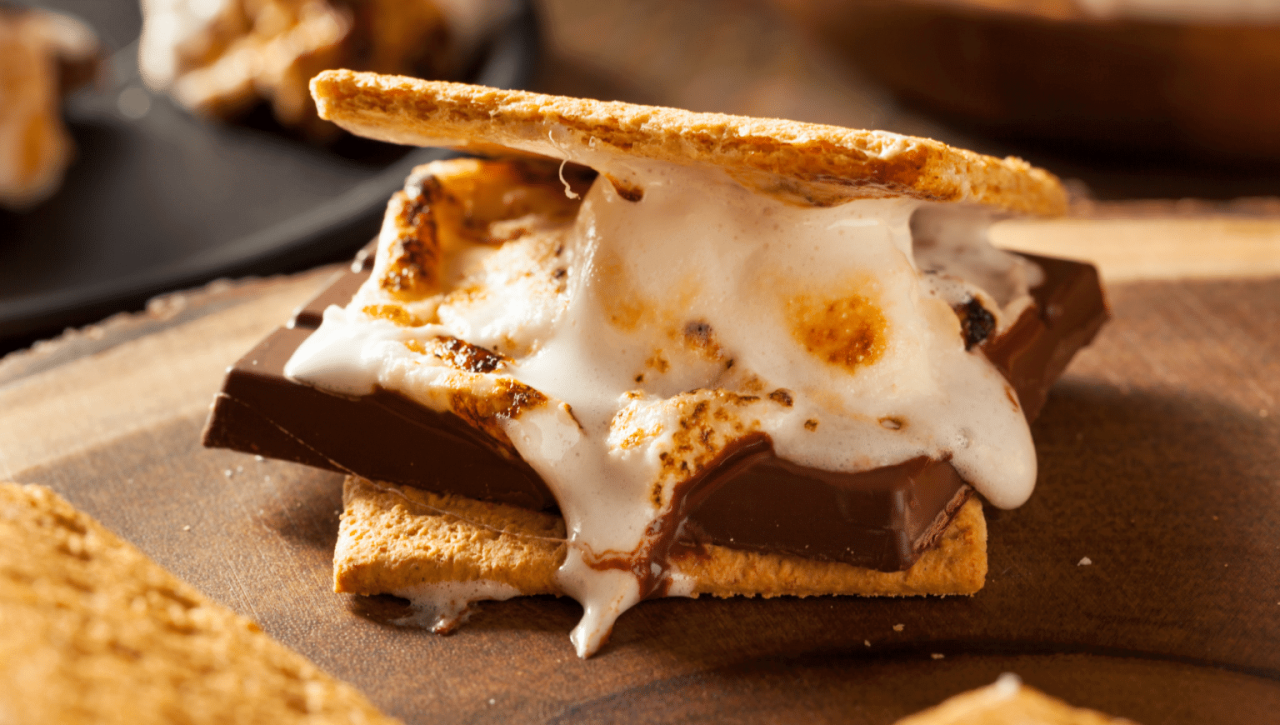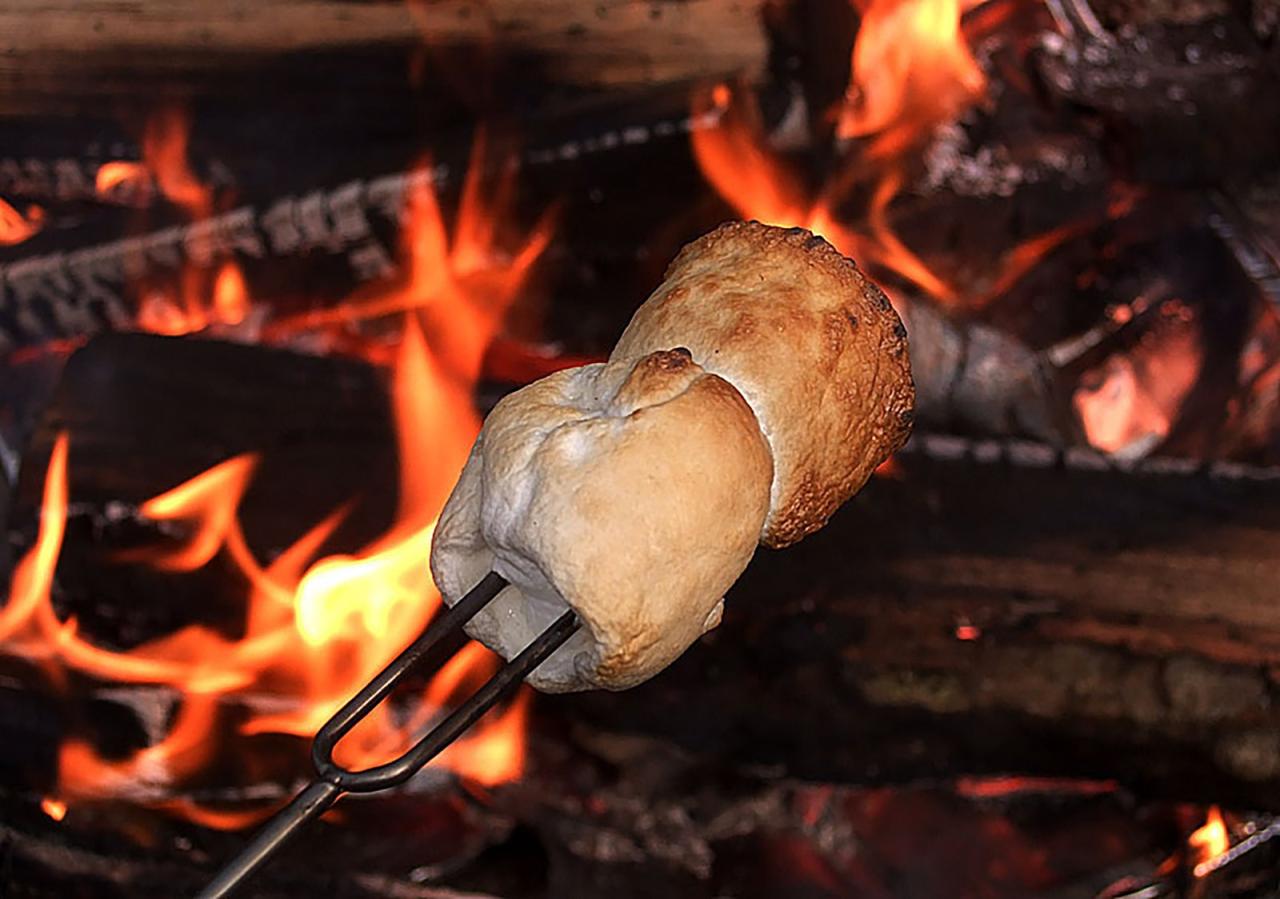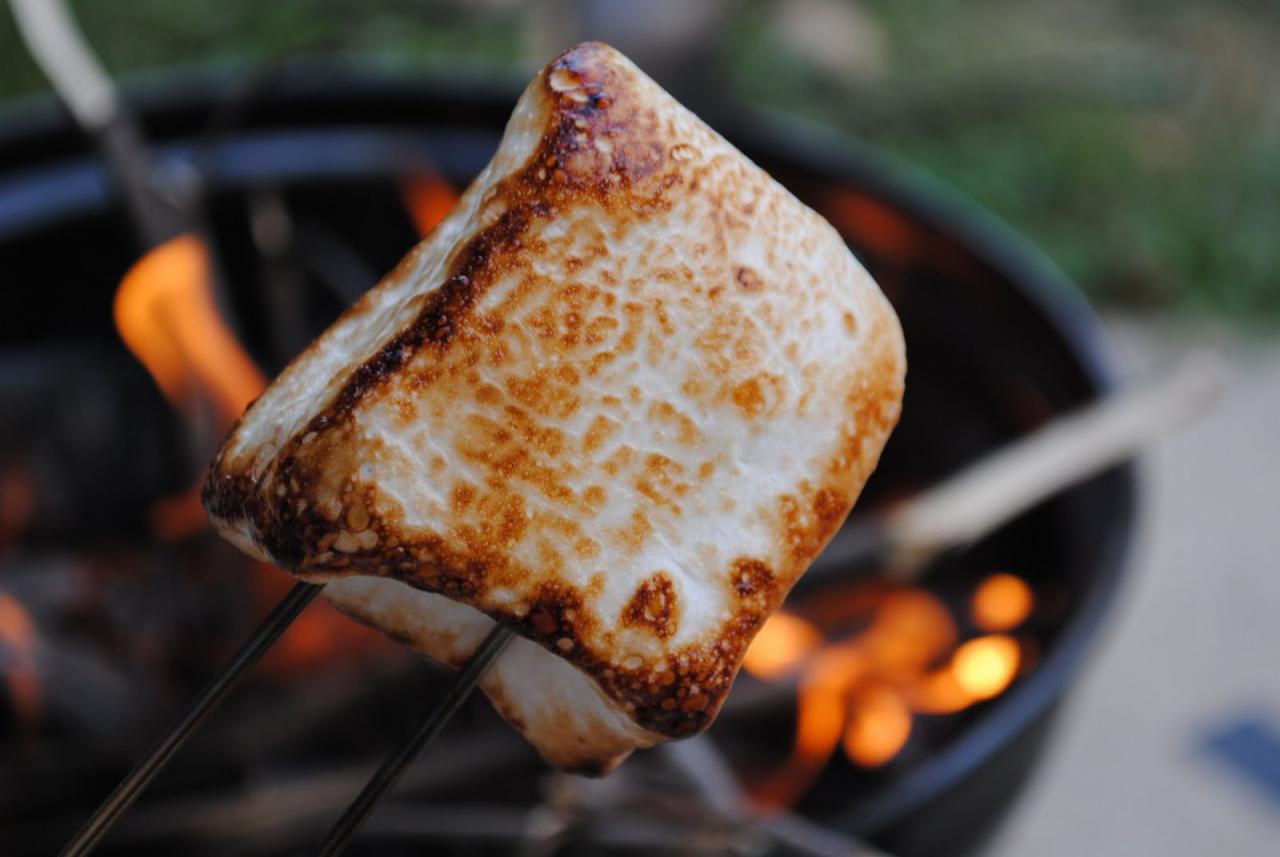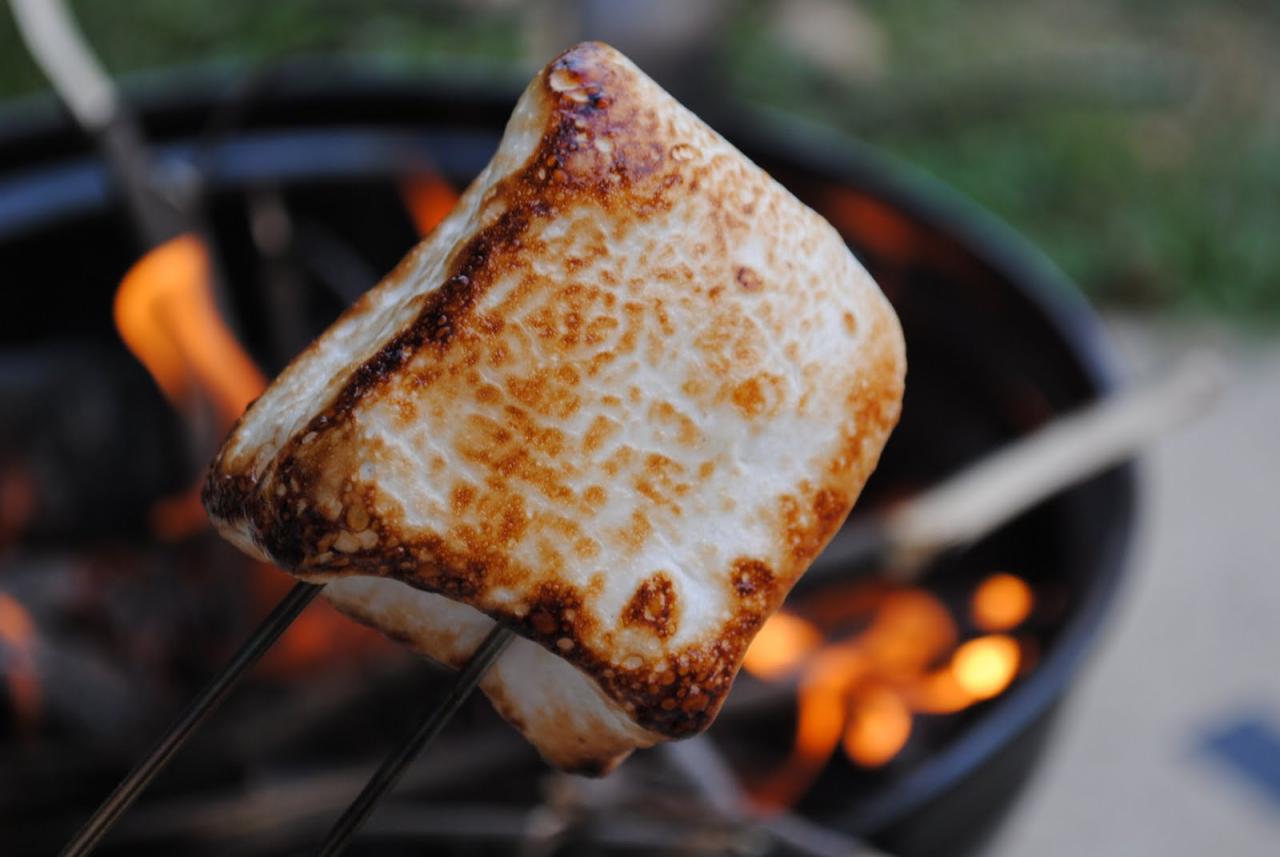Like the texture of a roasted marshmallow, this article delves into the unique sensory experience and culinary versatility of this beloved treat, exploring its artistic applications and creative inspirations.
From its soft and pillowy embrace to its ability to elevate both sweet and savory dishes, the marshmallow’s texture is a culinary canvas that invites exploration and experimentation.
Sensory Exploration: Like The Texture Of A Roasted Marshmallow

A roasted marshmallow possesses a texture unlike any other. Its exterior, kissed by the flames, develops a delicate crispiness that yields to an impossibly soft and yielding interior. The marshmallow’s texture is a symphony of contrasts, a delightful dance between the firm and the yielding.
Similar to a well-crafted meringue, a roasted marshmallow exhibits a remarkable elasticity. When gently prodded, it rebounds with a gentle springiness, as if it were a tiny, edible trampoline. Yet, unlike a meringue’s airy fragility, the marshmallow’s interior is surprisingly dense and substantial.
Softness, Like the texture of a roasted marshmallow
The marshmallow’s softness is its defining characteristic. It melts in the mouth like a cloud of spun sugar, leaving behind a lingering sweetness. This softness is attributed to the marshmallow’s high sugar content, which forms a network of tiny crystals that trap air pockets.
As the marshmallow is heated, the sugar crystals dissolve, releasing the trapped air and creating a fluffy, ethereal texture.
Elasticity
The marshmallow’s elasticity is another remarkable aspect of its texture. When stretched or pulled, it exhibits a remarkable resistance, as if it were made of rubber. This elasticity is due to the presence of gelatin, a protein that forms a network of bonds between the sugar crystals.
These bonds allow the marshmallow to stretch and rebound without breaking.
Tactile Qualities
In addition to its softness and elasticity, the roasted marshmallow possesses a range of tactile qualities that contribute to its unique texture. Its surface is slightly sticky, yet it does not adhere to the fingers. When pressed, it yields with a gentle resistance, as if it were a miniature cushion.
Culinary Applications
The marshmallow’s unique texture has made it a popular ingredient in various culinary applications. Its soft, chewy texture complements both sweet and savory dishes, adding a touch of sweetness and a satisfying bite.
Marshmallows can be used as a topping for hot chocolate or coffee, providing a sweet and fluffy contrast to the warmth of the beverage. They are also a popular ingredient in s’mores, a classic campfire treat that combines the gooeyness of marshmallows with the crunch of graham crackers and the richness of chocolate.
In Baking
Marshmallows are frequently used in baking to add sweetness, texture, and volume. They can be added to cookie dough to create chewy and gooey cookies, or they can be used as a filling for cakes and pies, adding a soft and fluffy layer.
In Confections
Marshmallows are a versatile ingredient in confections. They can be dipped in chocolate to create marshmallow pops, or they can be used to make marshmallow fondant, a pliable and sweet substance that can be used to decorate cakes and other desserts.
In Ice Cream
Marshmallows are a popular addition to ice cream, adding a chewy and sweet texture to the cold and creamy dessert. Rocky road ice cream is a classic example, combining marshmallows with chocolate and nuts for a delicious and satisfying treat.
Artistic and Creative Expressions

The unique texture of marshmallows, with its soft, pliable nature, has found a niche in the realm of arts and crafts. Their malleability inspires creativity, allowing them to be molded, sculpted, and manipulated into a wide array of artistic expressions.
Marshmallows can be cut, glued, and assembled to create intricate sculptures, decorative ornaments, and whimsical art pieces. Their light and airy texture makes them easy to work with, while their slightly sticky surface allows them to adhere well to various materials.
Marshmallow Sculptures
The soft, pliable texture of marshmallows makes them ideal for sculpting. Artists have crafted marshmallow sculptures of various sizes and complexities, ranging from small figurines to large-scale installations.
By carefully shaping and assembling marshmallows, artists can create realistic or abstract forms. The marshmallow’s white color provides a neutral base, allowing artists to paint or decorate them with food coloring, sprinkles, or other embellishments to enhance their visual appeal.
Wrap-Up

Whether enjoyed as a campfire staple, a nostalgic confection, or an artistic medium, the texture of a roasted marshmallow continues to captivate our senses and inspire our creativity.
Quick FAQs
What makes the texture of a roasted marshmallow unique?
The roasting process creates a caramelized exterior with a crisp and slightly chewy texture, while the interior remains soft and marshmallowy.
How does the texture of a marshmallow complement different flavors?
Its neutral flavor allows it to pair well with a wide range of flavors, from chocolate and fruit to savory ingredients like bacon and cheese.
What are some creative ways to use marshmallows in arts and crafts?
Marshmallows can be melted, molded, and sculpted to create unique decorations, sculptures, and even jewelry.

